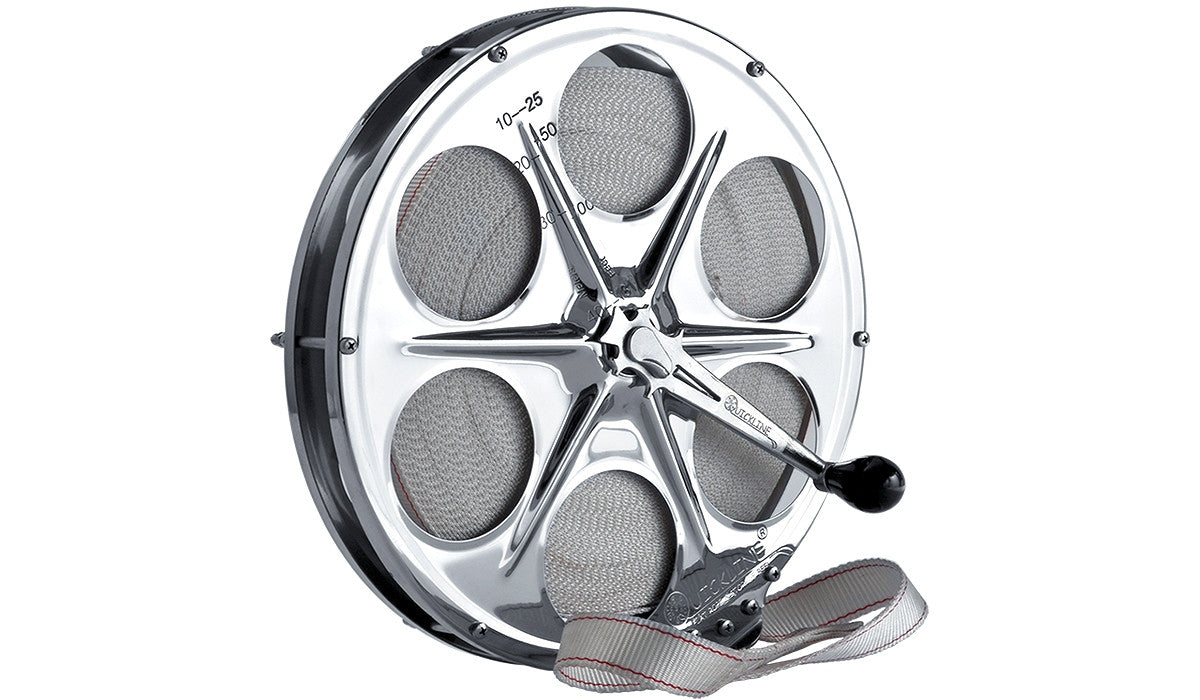
We’ve been stern-tying using our Flat Rope Reel aboard Traveler, our Cheoy Lee 46 Long Rane Cruiser for a couple years now. We love the look and performance of the system, as it makes anchoring in steep, deep water easy while taking up very little space on the boat. Recently, the Ultraline Flat Rope Reel (formerly known as the Quickline Flat Rope & Reel) has been rebranded and improved, replacing the old polypropylene line with the far superior Dyneema® floating line.
The basic idea of the Flat Rope Reel hasn’t changed a bit, though. When anchoring in a fjord or steeply sloping bottom, or you want to keep your boat from swinging in a tight anchorage, simply drop the hook and run the stern line to shore and back (or deploy a stern anchor). However, Ultraline switched to Dyneema® - the world's strongest fiber™ - for a few good reasons.
Number one is superior strength. With 7,000 lbf, Dyneema® has close to twice the breaking strength of polypropylene. This allowed Ultraline to make the line width smaller (taking up even less space on your boat), going from 30mm to 22mm.

Another important reason for the switch is Dyneema® has much higher UV resistance, making the line last much longer in sunnier climates.
And by shrinking the width of the line, Ultraline has made the system quieter. One issue some owners had with the wider flat polypropylene line was that it could vibrate and hum in windy conditions or strong currents. Of course, the simple solution we used for quieting flat line was to put a twist in it, which eliminated vibration and noise. Now, however, with the narrower width noise should not be a problem at all.
While Dyneema® has greatly improved the Ultraline Flat Rope Reel, twice the breaking strength has also doubled the price. This has not been a problem, according to Scott Cincotta, owner of Ultra Marine West. “Since Dyneema® has a higher UV resistance, lasting longer, and twice the breaking strength in 22mm making it a lot quieter, people understand the price increase”. He also added that more and more boaters are aware of Dyneema® and its high-tech, high-performance properties. And it floats, so there’s no worry about getting your stern line wrapped around a prop!
So we’re looking forward to getting our new Dyneema® replacement line in a few weeks at TrawlerFest in Bremerton, WA. We’ll test it out and update the video (below), as well as post updates and reports here and on our Facebook page.
In the meantime, you’ll find new specs and prices on the improved Ultraline Flat Rope Reel in our online store at www.PacificNWBoaterTESTED.com.Darren – I have the large Quickline reel with 330’ of yellow polyester line that needs replacing due to UV.
the Dyneema flat line available as a replacement? (How much would it cost.
Would the narrow width require modifications to the reel?
Comments will be approved before showing up.

Memories are made on the water. Often it's the skipper's (Dad's) job to ensure everyone has a good time and arrives safely at the end of the day or journey. Usually the thanks Captain/Dad gets is in the form of satisfied, happy faces. Which is enough! We decided to take that one step further, however, and made a collection of 12 items that show just how much you appreciate everything he does.

As of today, Section 301 Tariffs have impacted more than 300 commonly used components, materials, and parts for recreational boats in the United States (source, National Marine Manufacturers Association). Even our little online store is beginning to see price increases and supply chain disruptions...

Darren O'Brien
Author